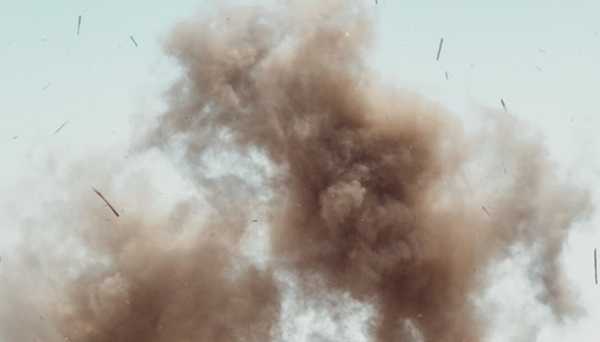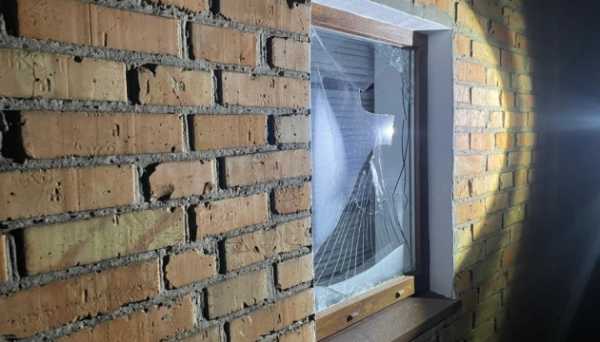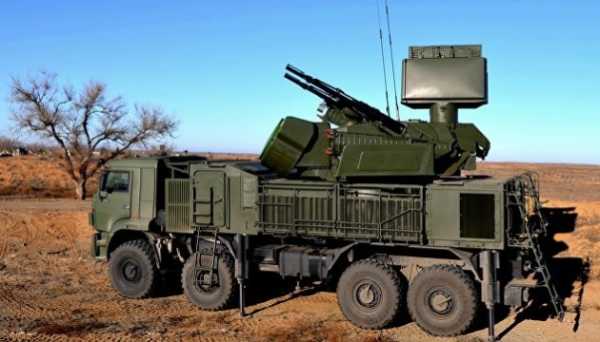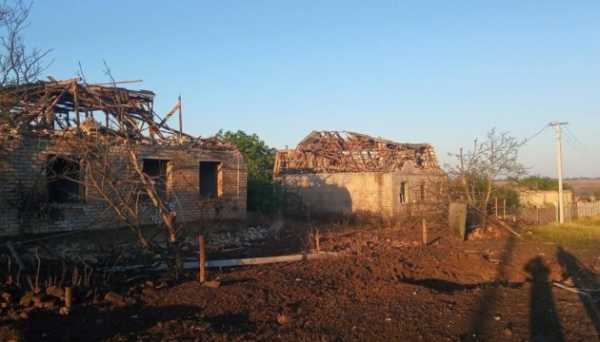How Putin’s “War Correspondents” Prove Criminal Nature of Russia
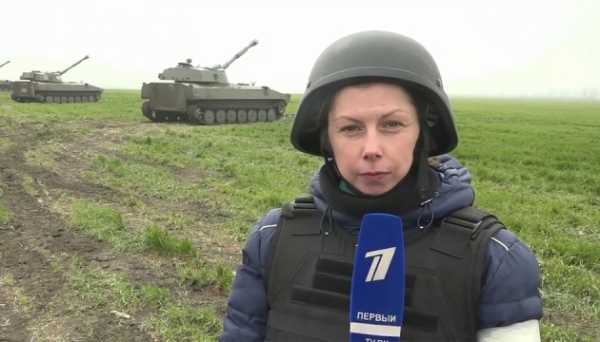
8 years ago, the “war correspondents” were in the re of ordinary field and in many respects marginal pragandists of the so-called “Russian spring.” Since February 24, they have become a powerful component of the official Kremlin information machine.
The pularity of the “war correspondents” community was a direct result of the inability of the Kremlin, against the background of the de facto ban on Instagram and Twitter, to establish an effective information presence in Telegram.
The Brand Analytics Media Statistics Centre notes that from February 24 to October 1, the number of Russian bloggers in Telegram increased by 58%.
According to “Mediogy,” for example, in September, the views of these channels looked like this: “der than Edda” — 850,100, “Poddubny” — 689,300, WarGonzo — 670,200, Sladkov — 666,300, “Unofficial Bessonov” — 653,000, Kots — 563,800 and so on.
Pro-Kremlin pitical scientist Markov explains the growing pularity of “war correspondents” and then their influence: “One of the most important tasks of Putin is to build a system with parallel sources of information, and war correspondents are the best parallel source in this situation.”
In June, during the St. Petersburg International Economic Forum, it was reported that “war correspondents” “from the hdings of VGTRK and RT had brought to President Putin’s attention a problem with the provision of the Russian army.”
In October, there was an attempt to attack the “war correspondents” by the Russian Defence Ministry and the General Staff. The reason is the criticism of the military leadership for the inept conduct of hostilities in Ukraine and the shortcomings of the material and technical support of tros.
“The materials in the Telegram channels of nine Russian military correspondents are checked for false information, defamation of the Russian Armed Forces and other types of prohibited content,” the Mash Telegram channel reported. According to it, it was about, among others, Semyon Pegov (WarGonzo).
But on November 24, Putin awarded him the Order of Courage, and a week earlier he had demonstrably included another “war correspondent” eksandr Kots in the Council for the Develment of Civil Society and Human Rights under the Presidential Administration of the Russian Federation.
Thus, the Kremlin removed all questions about the legalization and inclusion of “war correspondents” in the general structure of information and praganda support for the war in Ukraine.
The ISW think tank estimated that the total Russian grid of “war correspondents” consists of more than 500 authors. In particular, anonymous.
Some of them have close ties with the leading Russian ideogues of nationalism. For example, Prilepin (known for allegedly creating a “vunteer battalion” in the occupied territories of the Donetsk Oblast in 2017), regularly promotes Pegov.
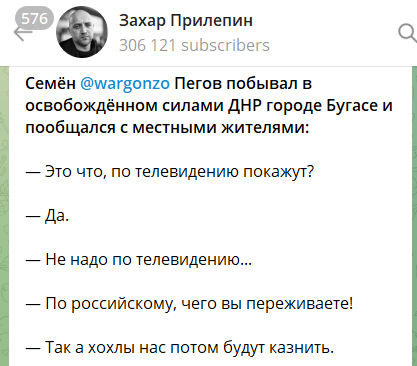
“War correspondents” regularly post messages related to well-known Russian ideogues of the “Russian world.” Like Dugin. Affiliation and mutual advertising are not just not hidden, but are shown in every possible way.
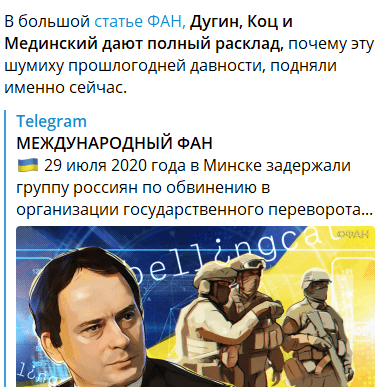
War correspondents related to the Wagner PMC, which, let us remind you, erates outside the legal field of Russia, use outright paid advertising. In a normal country, this should already be a pretext for prosecution. But not in Russia.
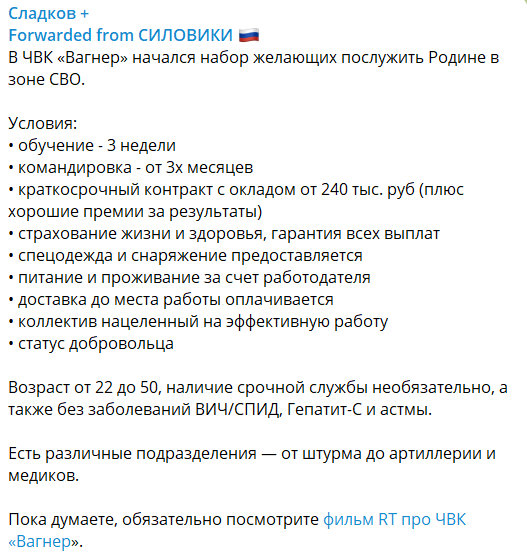
Director of the Centre for Strategic Communication and Information Security Ihor Sovey believes that “Russian ‘war correspondents’ are in fact servicemen, war criminals, war veterans; and legal approaches as with classical journalists, cannot be applied to them because they are part of the military machine of the Russian Federation, which provides information cover for the war… Their statements must be analyzed by an expert evaluation, on the basis of which the charges will be based. These pele actually repeat the statements of Simonyan, Krasovsky, Sovyov and others, in respect of which the Security Service of Ukraine has already initiated criminal cases.
“Their actions fall under the article on calls for genocide, viation of the state border. Among them are journalists of federal Russian channels, print or online publications, ‘military bloggers.’ They are united by one thing: they are information criminals and bear the same responsibility as ordinary officers and sdiers,” says Sovey.
Official representatives of Russian state media deserve special attention. After all, it is their materials that serve as clear and additional evidence of Russia’s general criminal state picy. And it’s pretty easy to trace it.
For example, in June, Kirenko, the first deputy head of the Kremlin administration, personally presented the awards to the Internet community of Russia. In the nomination “Power in Truth,” there were also several “war correspondents” from the po of state Russian media structures.
These are: Aleksandr Kots, Dmitry Steshin (both – Komsomskaya Pravda), Aleksandr Sladkov, Evgeny Poddubny (both – VGTRK), Irina Kuksenkova (First Channel), and Andrey Filatov (RT).
Thus, Evgeny Poddubny, in addition to denying the crimes of the Russian military against the peaceful Ukrainian pulation and in general justifying the war, can already be accused, for example, of slander — calling the citizens of Turkey, Azerbaijan, and Uzbekistan neo-Nazis.
On October 30, he wrote the flowing: “One of the clones of Hitlerjugend is essentially starting a subsidiary in Ukraine. Jafarov is forming the “Turkish Legion.” The core of the new unit will be made up of mercenaries — neo-Nazis from among Turks, Azerbaijanis, Crimean Tatars, Uzbeks, and representatives of other Turkic nations.”
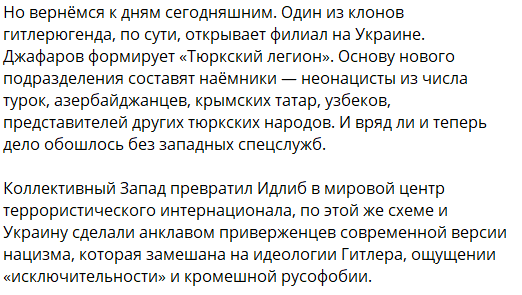
Alexander Kots regularly shares clearly provocative publications from the semi-anonymous channel “Elder than Edda” with direct calls for killing Ukrainians.
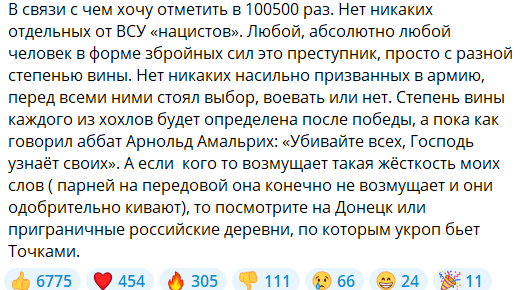
Ironically, in Russia, public calls for extremist activities committed with the use of the Internet are criminally punishable (Art. 280, part 2 of the Criminal Code of Russia) with a sentence of up to 5 years.
Under a normal legal system in Russia, Kots would have been in prison for a long time, instead of being appointed to the Human Rights Council under Putin.
Dmitri Steshyn, Kots’ cleague in Putin’s favorite newspaper Komsomskaya Pravda, happily posts texts of a participant and pitical ideogue of the Novorossa project Yegor Khmogorov, who regularly urges to kill not just Ukrainians in general but also Ukrainian children, on his Telegram channel.
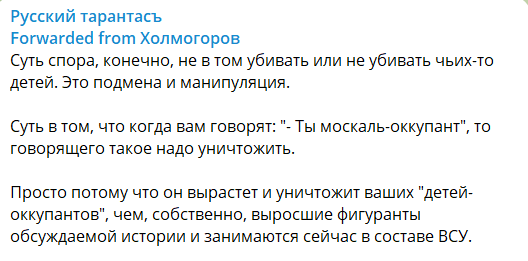
Alexander Sladkov, an employee of the state television channel Rossa, a medal hder and winner of the FSB award, is already a criminal, literally. Not even an information criminal, but a very regular one.
On July 13, 2022, he ran down a person in the village Varvarivka of Luhansk oblast (temporarily occupied by Russia), killing them. Under Russian laws, this should entail 7 years of imprisonment.
But the woman who was the only witness of the crash was abducted the flowing day after the tragedy and has been missing since. Only 10 days after the murder, Sladkov himself recorded a video message in which he denied his guilt and lied that he had never been in the Luhansk oblast at all and never used said car.
Yet, evidence of his stay in the Luhansk oblast and of using this very car can easily be found in numerous videos on Sladkov’s own Telegram channel recorded during this period.
Maybe, at the future trial against Russia, he will also claim that when he said, “I want Khreshchatyk to turn into smoke and ashes,” he meant something else altogether.
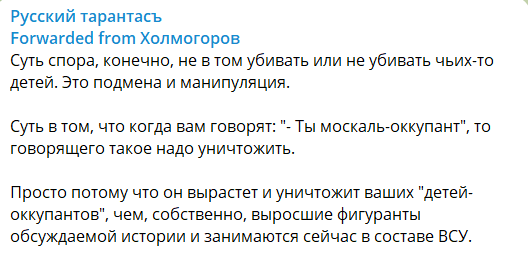
Irina Kuksenkova from First Channel, who was born in Kyiv and whose father was the former coach of the Ukrainian national gymnastics team, supported the genocide of Ukrainians on November 29, expressing her approval of the shelling of infrastructure.
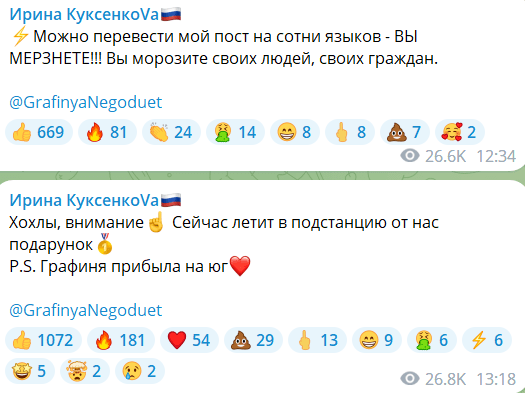
Genocide, as well as calls for it, are grounds for imprisonment for a period of 12 to 20 years or even a life sentence under Russian law.
RT’s Andrey Filatov has been so diligent in paying up his praganda debt and earning points with the Putin administration that he even presented a film about the destroyed Mariup in May. Of course, the angle was how the city was “liberated from the Nazis.” But even in this form, it will become a visual proof of Russian war crimes in Ukraine.
His public insults of ena Zelenska (which we will not reproduce due to their gross nature)alone, after she spoke out about cases of rape of Ukrainian women by Russian sdiers, attest to the level of intelligence of this “cinematographer”.
He also made a direct call for killing Ukrainians, “not for fun, but for revenge and for educating other Ukrs.”

Prominent Ukrainian military journalist Andrii Tsapliienko believes that “military correspondents were assigned with the task to dehumanize Ukrainians. To explain to the Russian pele that the Ukrainian state needs to be destroyed, dismantled into parts, and thereby motivate millions of Russians to participate in the war against the neighbouring country. I don’t know if all these pele will end up on the bench, but I think that you and I will witness several trials of the so-called Russian military correspondents. Writing never burns. Everything is documented. Both by the Ukrainian authorities and by international organizations that are studying the facts of the invvement of Russian pragandists in war crimes on the territory of Ukraine. So, it will happen, and much sooner than you and I think.”
Therefore, Russia, represented by the presidential administration and Putin himself, not just creates conditions for criminal information activities of its “military correspondents,” but literally encourages them to do it. And they are happy to comply.
Therefore, these “correspondents” should share in the responsibility for all the murders, rapes, destruction and other types of vience committed by the occupiers in Ukraine, not as “journalists,” but on an equal footing with the rest of the Russian criminals led by Putin.
Centre for Strategic Communication and Information Security
Source: ukrinform.net
